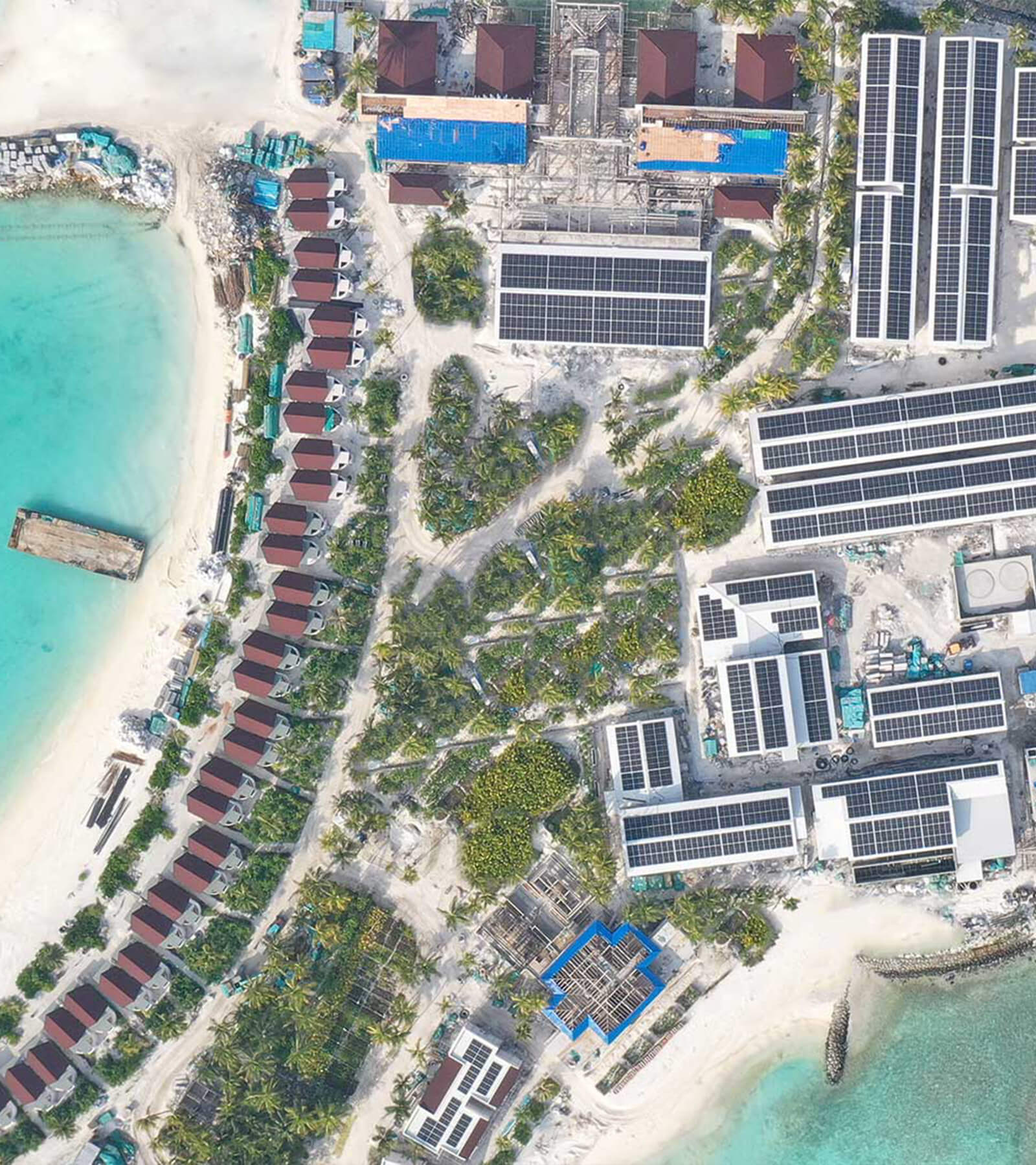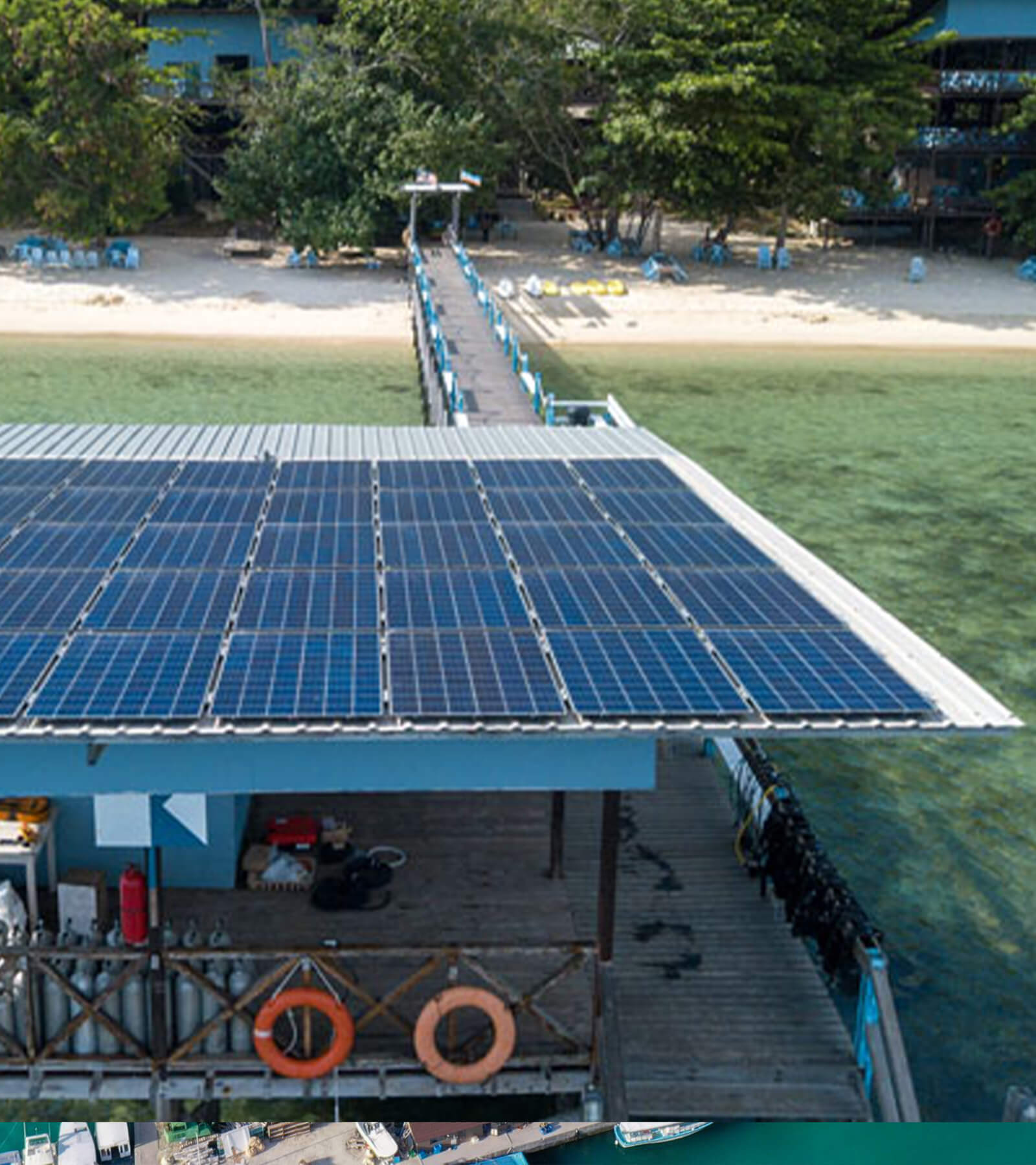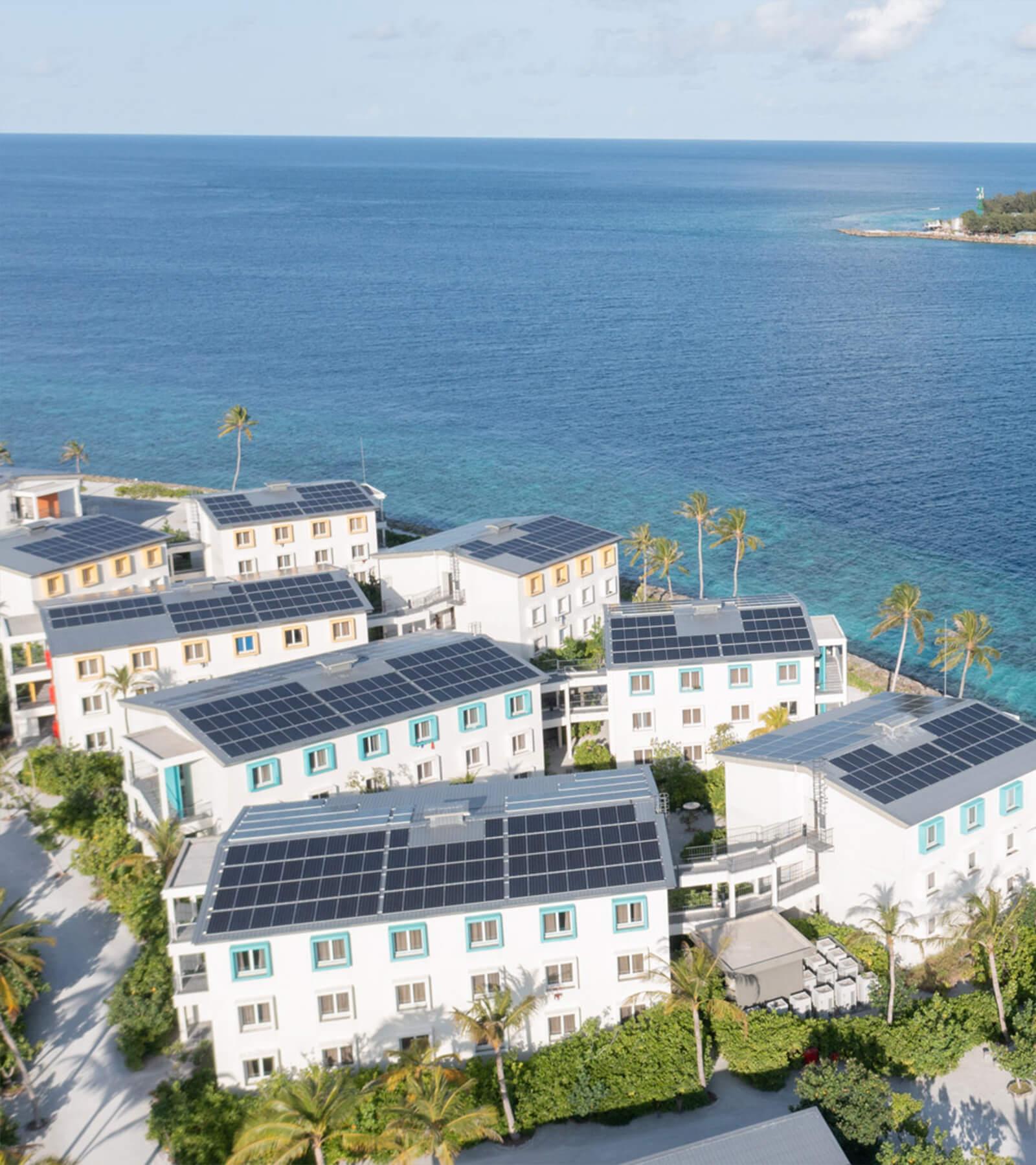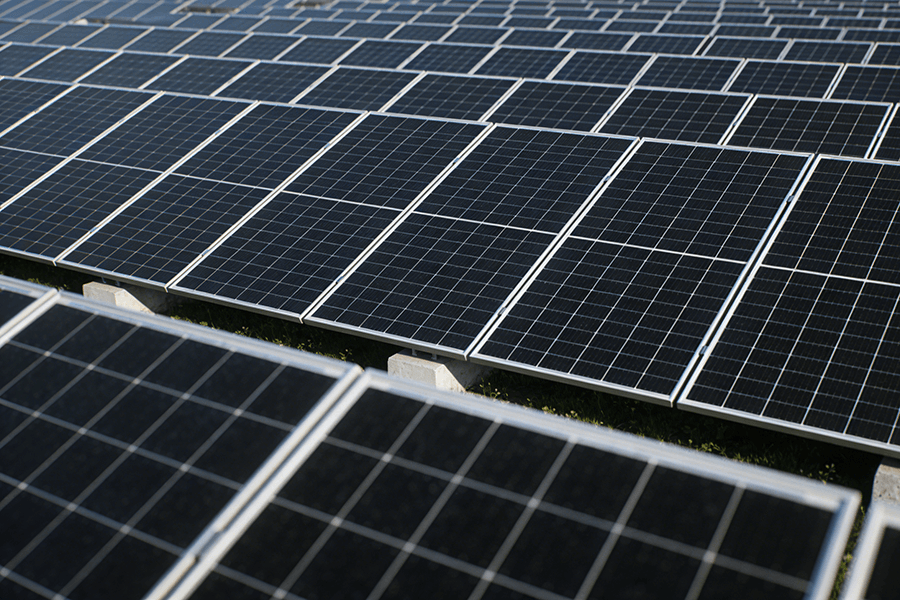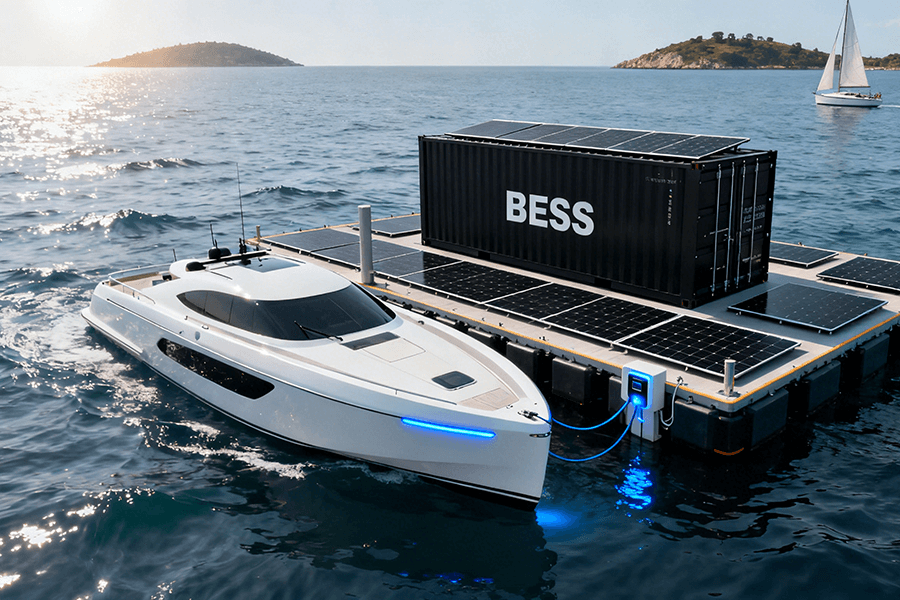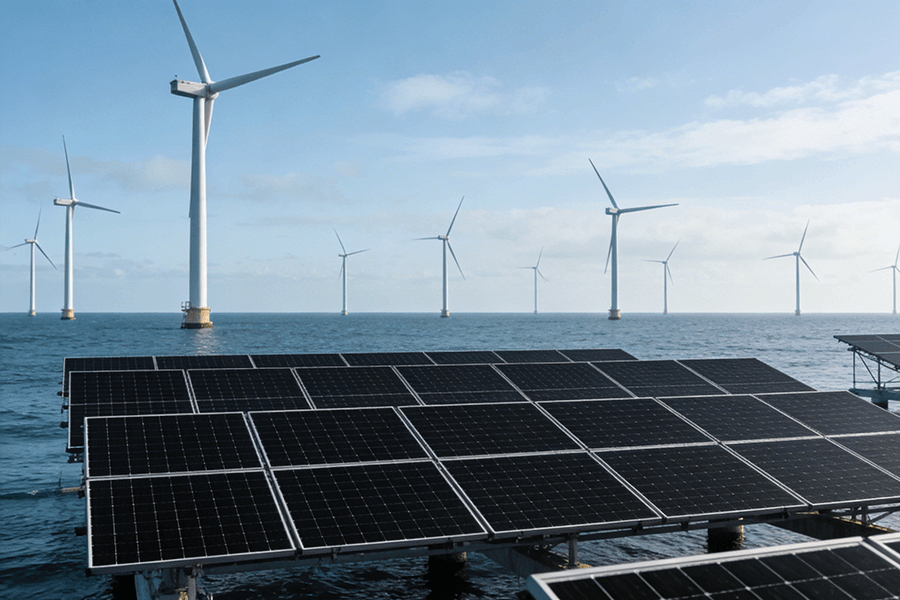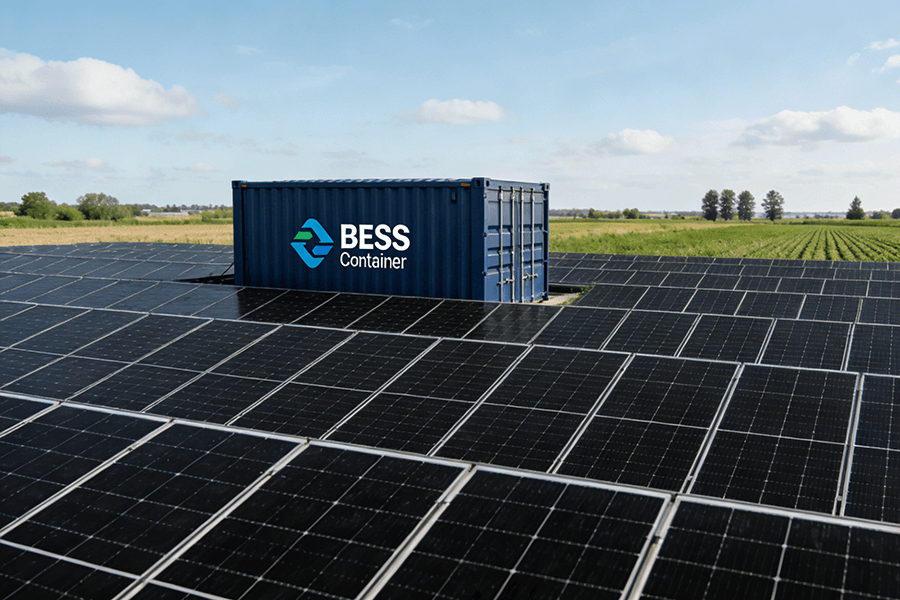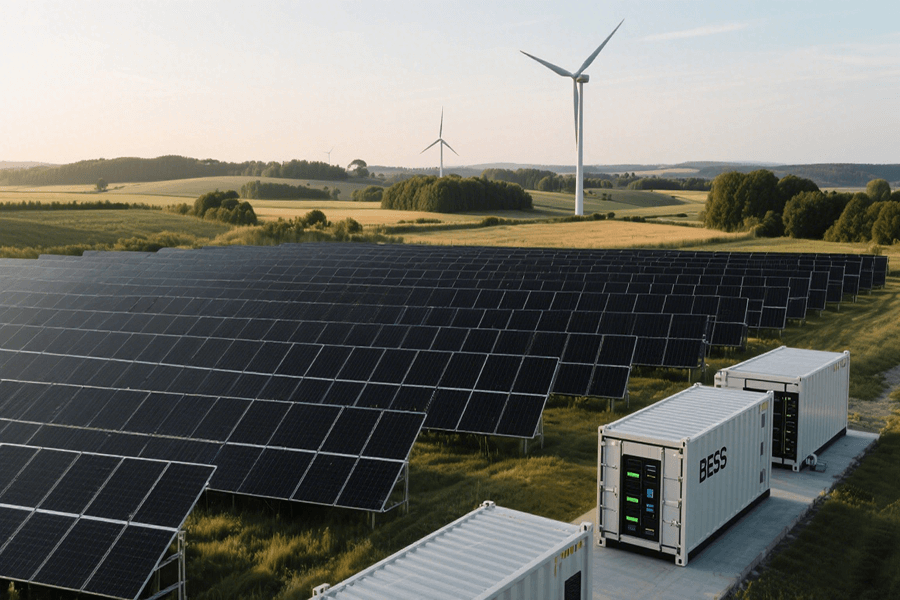
The European energy grid is in the midst of a renewable revolution
Wind turbines spin across the North Sea, their blades carving arcs against the horizon as they convert the ceaseless power of the wind into electricity. Solar panels blanket rooftops from Spain to Sweden, glinting in the sunlight and silently harvesting the sun’s energy, turning it into a sustainable resource. However, amidst this green energy renaissance, one critical challenge looms large: how to wrangle the wild variability of these clean energy sources.
Solar power ebbs with the setting sun and wanes on cloudy days, while wind energy fluctuates with changing weather patterns. This intermittent nature of renewables creates a rollercoaster of supply, making it difficult to match energy production with the steady demands of households, industries, and businesses across Europe.
Enter the AI-Optimized BESS (Battery Energy Storage System) Container: think of it as the grid’s Swiss Army knife, but with a PhD in machine learning. This cutting-edge technology represents a paradigm shift in energy storage, offering a sophisticated solution to the renewable energy variability conundrum.
Traditional storage systems vs. AI-driven BESS containers
Traditional storage systems, while useful, are like using a flip phone in a smartphone era—functional, but far from efficient. These legacy systems rely on basic algorithms and manual controls, struggling to adapt to the rapid changes in energy supply and demand. They often waste energy during charging and discharging processes, resulting in significant losses.
In contrast, AI-driven BESS containers leverage the power of advanced machine learning algorithms and real-time data analytics. These intelligent systems can predict energy demand patterns, anticipate changes in renewable energy generation, and optimize the charging and discharging cycles of the batteries. As a result, they boast a 20% higher round-trip efficiency, meaning more of the energy you put in actually comes back out when you need it. It’s the difference between a leaky bucket and a sealed thermos: every drop (or kilowatt) counts.
The crucial role of AI-optimized BESS containers
This isn’t just a minor upgrade. For Europe’s goal of hitting 40% renewable energy by 2030, AI-optimized storage isn’t a luxury—it’s a linchpin. By smoothing out the peaks and valleys of renewable energy production, these containers enable a more stable and reliable energy supply, reducing the need for backup fossil fuel power plants.
Moreover, they can also help integrate more renewables into the grid, unlocking the full potential of Europe’s vast wind and solar resources. In the following sections, we’ll dive into how these AI-optimized BESS containers work, why they save money, and where they’re already proving their worth in real-world applications.
Core Analysis 1: Machine Learning—The Grid’s Weatherman (But Way More Reliable)
If renewable energy were a party, wind and solar would be the guests who show up two hours early… or skip out entirely. Their intermittent nature poses a significant challenge for grid operators, who must maintain a delicate balance between supply and demand to keep the lights on. This is where the power of machine learning comes into play, offering a sophisticated solution to predict these fluctuations with pinpoint accuracy.
How It Works
Machine learning algorithms are voracious consumers of data, akin to a hungry toddler at a buffet, constantly ingesting vast amounts of information to improve their predictive capabilities. Here’s a detailed breakdown of the key data sources they rely on:
- Historical Energy Production: By analyzing the past performance of renewable energy sources, such as how much that Danish wind farm generated during last winter’s storms, ML models can identify patterns and trends. This historical context provides valuable insights into the typical behavior of these sources under various conditions.
- Real-time Weather Data: Weather is a major determinant of renewable energy generation. Is a cloud bank rolling toward Germany’s solar fields? Or is a strong wind front approaching a wind farm? Real-time weather data, including information on temperature, humidity, wind speed and direction, and cloud cover, enables ML algorithms to make immediate adjustments to their predictions.
- Grid Demand Patterns: Understanding when and where electricity is needed is crucial. Will factories in Poland crank up production on a Tuesday afternoon? Or will there be a spike in residential demand during a heatwave? By analyzing historical grid demand data and taking into account factors such as time of day, day of the week, and seasonal variations, ML models can anticipate changes in demand and adjust their predictions accordingly.
The result? Predictions so sharp and reliable, they make your local weather app look like a coin flip in comparison. These advanced ML algorithms are able to forecast renewable energy generation with a level of accuracy that was previously unattainable, providing grid operators with the confidence they need to manage the grid effectively.
The Numbers Don’t Lie
The effectiveness of AI-driven machine learning in predicting renewable energy variability is best illustrated by the real-world example of Denmark. In this country, where wind power accounts for over 50% of electricity generation, AI models have achieved an impressive 95% accuracy in predicting wind variability. To put this into perspective, consider the average human’s ability to guess tomorrow’s temperature, which is far less accurate.
| Forecasting Method | Accuracy in Wind Variability Prediction | Practical Impact |
|---|---|---|
| Traditional Statistical Models | ~70% | Frequent over/under-storage, leading to grid instability and inefficiencies |
| AI-Driven ML Algorithms | 95% | Precision charging/discharging, reduced waste, and enhanced grid stability |
This significant improvement in accuracy has far-reaching implications for the management of renewable energy sources. With more precise predictions, grid operators can optimize the charging and discharging of battery energy storage systems (BESS), ensuring that excess energy is stored for later use and that the grid remains stable even during periods of high variability. This not only reduces waste but also maximizes the utilization of renewable energy, bringing us one step closer to a more sustainable and reliable energy future.
Core Analysis 2: Cost Savings—AI as the Grid’s Penny-Pinching Accountant
Energy storage isn’t cheap. The high costs associated with energy storage systems can significantly impact the profitability of renewable energy projects. From the inevitable battery degradation over time to the expenses incurred by maintenance crews, operational costs can erode renewable profits at an alarming rate, often more rapidly than the effects of a tax audit. However, the advent of AI-optimized BESS (Battery Energy Storage System) containers presents a game-changing solution designed to save money, and it all starts with predictive maintenance.
Predictive Maintenance: Fix It Before It Breaks
To better understand the concept of predictive maintenance for BESS containers, consider this analogy: Imagine your car could accurately predict that a tire would go flat next week, providing you with ample time to take preventive action instead of leaving you stranded on the highway. That’s precisely the power of predictive maintenance in the context of BESS containers.
These advanced systems are equipped with an array of sensors embedded throughout the infrastructure. These sensors continuously monitor a wide range of critical parameters, from the temperature of individual battery cells to the performance of inverters. The data collected by these sensors is then fed into sophisticated AI models. These models use machine learning algorithms to analyze the data in real-time, identifying patterns and anomalies that could potentially lead to system failures. By detecting issues at an early stage, well before they escalate into major crises, the AI system enables proactive maintenance, minimizing downtime and reducing repair costs.
The financial benefits of this approach are substantial. Implementing predictive maintenance in BESS containers has resulted in a remarkable €0.08/kWh reduction in O&M (Operations and Maintenance) costs. To put this into perspective, for a 100 MWh energy storage system, this translates to savings of over €1 million annually. These savings are significant enough to fund the installation of 20 new solar panels or even a small wind turbine, further enhancing the renewable energy capacity of the system.
Other Cost Drivers
In addition to predictive maintenance, AI-optimized BESS containers offer several other cost-saving features:
- Optimized Charging/Discharging: The AI system is designed to optimize the charging and discharging cycles of the energy storage system. By analyzing real-time energy market data, the AI can identify periods of low energy prices, such as during midday when solar energy production is abundant, and schedule charging during these times. Conversely, it can detect periods of high energy demand and price spikes, typically in the evenings, and discharge the stored energy to take advantage of the higher prices. This strategic approach not only maximizes the utilization of renewable energy but also turns the energy storage system into a revenue-generating asset.
- Extended Battery Lifespan: One of the key factors contributing to the high cost of energy storage is the need for frequent battery replacements. However, AI-optimized BESS containers address this issue by implementing intelligent charging and discharging strategies. By carefully managing the state of charge of the batteries and avoiding overcharging or deep discharges, which are known to accelerate battery degradation, the AI system can extend the lifespan of the batteries by 2–3 years. This not only reduces the frequency of costly battery replacements but also minimizes the overall cost of ownership of the energy storage system.
Case Study: 2025 UK Project—AI and BESS in Action
Talk is cheap. Let’s turn the spotlight on a groundbreaking real-world implementation: a 50 MWh AI-Optimized Battery Energy Storage System (BESS) Container deployed in the United Kingdom in 2025, seamlessly managed by OpenAI’s advanced energy optimization platform. This innovative project serves as a testament to the transformative potential of artificial intelligence in the energy sector.
Project Goals
The deployment of this AI-Optimized BESS Container was driven by three key objectives, each designed to address critical challenges in the UK’s energy landscape:
- Grid Stabilization During Peak Demand: Specifically targeting peak consumption periods, such as 6 PM, when households across the country are simultaneously engaged in activities like cooking dinner and streaming entertainment. During these times, the grid experiences a significant surge in demand, which can strain its stability. The BESS container plays a crucial role in maintaining grid equilibrium by discharging stored energy precisely when it’s needed most.
- Absorbing Excess Wind Energy: The UK is home to numerous offshore wind farms in the North Sea, which generate vast amounts of clean energy. However, the intermittent nature of wind power means that there are often periods of excess generation when the wind is blowing strongly but demand is low. The BESS container is strategically positioned to capture this surplus wind energy, storing it for later use when demand rises or when wind generation decreases.
- Reducing Reliance on Gas-Fired Peaker Plants: Peaker plants are gas-fired power stations that are typically brought online during periods of high demand or energy shortages to meet the shortfall. These plants are expensive to operate and contribute significantly to carbon emissions. By providing a reliable source of stored energy, the AI-Optimized BESS container helps to reduce the need for peaker plants, thereby lowering both costs and environmental impact.
The Results? A Home Run.
The performance of the 50 MWh AI-Optimized BESS Container over a six-month period was nothing short of remarkable, delivering tangible benefits across multiple fronts:
- Grid Stress Reduction: By intelligently discharging stored energy during high-demand windows, the system achieved an impressive 35% reduction in peak grid stress. This not only enhances the reliability and resilience of the grid but also helps to prevent power outages and other disruptions.
- Cost Savings: The avoided use of gas-fired peaker plants resulted in substantial cost savings, totaling £1.2 million over the six-month period. These savings are a direct result of the BESS container’s ability to provide a more cost-effective alternative to peaker plants during periods of high demand.
- Increased Wind Energy Utilization: One of the most significant achievements of the project was a 22% increase in wind energy utilization. This means that less clean energy was wasted due to a lack of storage capacity, effectively maximizing the potential of the UK’s offshore wind resources and contributing to the country’s transition to a low-carbon energy future.
But the benefits of OpenAI’s energy optimization platform extend beyond these quantitative results. The platform’s advanced machine learning algorithms enable it to learn from historical data and adapt to changing conditions, allowing it to anticipate local events and optimize energy storage and distribution in real-time. A prime example of this capability was demonstrated during the 2025 Glastonbury Festival, one of the largest music festivals in the world. Recognizing the significant increase in energy demand that would accompany the influx of festival-goers, the platform pre-charged the BESS container in advance to ensure that it could meet the surge in campers’ energy use. This proactive approach not only ensured a reliable supply of energy for the festival but also showcased the ability of AI to think and plan ahead, much like a human, but without the distractions or limitations that come with human decision-making.
Conclusion: AI + BESS = The EU Grid’s Dynamic Duo
Europe’s renewable goals aren’t just about installing more wind turbines or solar panels—they’re about making sure that energy is usable when and where it’s needed. AI-optimized BESS containers are the missing piece:
- They turn variability into reliability.
- They turn waste into savings.
- They turn “maybe someday” into “here and now.”
For a continent racing to decarbonize, this synergy isn’t just innovative—it’s indispensable.
About Maxbo Solar: Powering the AI-Storage Revolution
At Maxbo Solar, we’re not just watching this revolution—we’re building it.
For over a decade, we’ve specialized in integrating cutting-edge AI with robust BESS technology, designing containers that don’t just store energy, but outthink the grid. Our systems are tailored to Europe’s unique needs:
- Climate-Resilient Design: Built to withstand Nordic ice storms and Southern European heatwaves.
- Seamless Integration: Plug-and-play compatibility with existing wind and solar farms.
- AI That Learns Local: Our algorithms adapt to regional weather patterns, from the gusty UK coast to the sun-drenched plains of Hungary.
Curious how an AI-Optimized BESS Container can supercharge your renewable project? Visit us at www.maxbo-solar.com to explore case studies, get a custom quote, or just geek out about the future of energy with our team.
The grid of tomorrow isn’t coming—it’s here. And we’re powering it.


